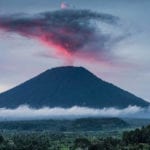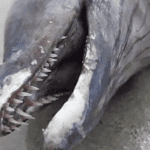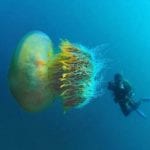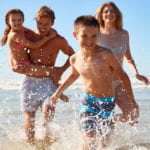 Music
Music  Music
Music  History
History 10 Less Than Jolly Events That Occurred on December 25
 Weird Stuff
Weird Stuff 10 Funny Ways That Researchers Overthink Christmas
 Politics
Politics 10 Political Scandals That Sent Crowds Into the Streets
 Weird Stuff
Weird Stuff Ten Bizarre Facts About The Doge Meme
 Our World
Our World 10 Ways Your Christmas Tree Is More Lit Than You Think
 Movies and TV
Movies and TV The 10 Coolest Stars to Set Sail on The Love Boat
 History
History 10 Things You Didn’t Know About the American National Anthem
 Technology
Technology Top 10 Everyday Tech Buzzwords That Hide a Darker Past
 Humans
Humans 10 Everyday Human Behaviors That Are Actually Survival Instincts
 Music
Music 10 Surprising Origin Stories of Your Favorite Holiday Songs
 History
History 10 Less Than Jolly Events That Occurred on December 25
 Weird Stuff
Weird Stuff 10 Funny Ways That Researchers Overthink Christmas
Who's Behind Listverse?

Jamie Frater
Head Editor
Jamie founded Listverse due to an insatiable desire to share fascinating, obscure, and bizarre facts. He has been a guest speaker on numerous national radio and television stations and is a five time published author.
More About Us Politics
Politics 10 Political Scandals That Sent Crowds Into the Streets
 Weird Stuff
Weird Stuff Ten Bizarre Facts About The Doge Meme
 Our World
Our World 10 Ways Your Christmas Tree Is More Lit Than You Think
 Movies and TV
Movies and TV The 10 Coolest Stars to Set Sail on The Love Boat
 History
History 10 Things You Didn’t Know About the American National Anthem
 Technology
Technology Top 10 Everyday Tech Buzzwords That Hide a Darker Past
 Humans
Humans 10 Everyday Human Behaviors That Are Actually Survival Instincts
The World’s 10 Most Dangerous Beaches
After ocean swimming was popularized in Victorian Britain as a health activity, beaches transitioned from places where people worked or foraged to places of recreation and enjoyment. Today, beaches are regularly featured in picture-postcard images as idyllic places of coconut palms, white sand, pretty girls in bikinis, kitesurfers getting big air, and surfers riding perfect waves, not dangerous places to be avoided.
Millions of people worldwide enjoy beaches during their holidays and for recreational opportunities on a daily basis, including surfing, swimming, fishing, sunbathing, shell-collecting, running, dog-walking, clamming, sleeping, counting sand grains, and dozens of other activities.
But beaches have another side—one that can be both sinister and downright dangerous. Here are 10 of the world’s most dangerous beaches.!
Related: Top 10 Dangerous Diseases Lurking At The Beach
10 Second Beach, Port St. Johns, Transkei Coast of South Africa
Second Beach at Port St. Johns is an otherwise pleasant holiday destination on the magnificent Transkei coast of South Africa. Families have taken their holidays here for decades. However, in recent years Second Beach has acquired the reputation as the most dangerous beach in South Africa.
With eight fatal shark attacks in five years on surfers and swimmers, Second Beach may well be the most dangerous beach in the world for sharks.
The species claimed to be responsible for the fatal incidents at Second Beach is the Zambezi shark, known as a Bull shark in other parts of the world. Bull sharks can grow to 2.5 meters (8 feet) and have a reputation for aggressive behavior. They are known to take a bite out of almost anything they find in the water, much like Tiger sharks.[1]
9 New Smyrna Beach, Florida, USA
Also near the top of the list for shark attacks is New Smyrna Beach, located in Volusia County, Florida, USA. New Smyrna is a popular state-administered beach with plenty of parking. It has a high number of surfers and ocean swimmers year-round, with an average of 9 shark bites per year.
When seasonal schools of juvenile fish swim northward along the Florida coast in an annual migration involving millions of animals, they are followed by a multitude of predators, among them sea birds and sharks.
Fortunately, most of the sharks following the schools of baitfish at New Smyrna are also juveniles of 2 meters (6 feet) in length or less, with the vast majority of bites non-fatal, unlike human encounters with bigger sharks elsewhere.[2]
8 Boa Viagem Beach, Recife, Pernambuco, Brazil
Also high on the list of dangerous beaches due to shark activity is Boa Viagem in Recife, in the tropical state of Pernambuco in northeast Brazil. Boa Viagem is a very popular beach in the center of Recife, a city of two million people. And many of them embrace beach culture and participate in many beach activities year-round, like surfing and swimming.
There have been over 50 shark attacks recorded in the past 20 years at this beach, many of them fatal. As a result, Boa Viagem has actually banned surfing and swimming in water more than one meter (39 inches) deep since 1999.
Lifeguards undergo special training to deal with shark injuries, and most of the incidents have been attributed to Bull and Tiger sharks, both large sharks known to be aggressive species.
Despite years of discussion among experts on a path forward to reduce the number of shark incidents at Boa Viagem, there is no clear plan other than to keep people out of the water.[3]
7 Sandy Beach, O’ahu Hawaii, USA
Sandy Beach, on the southeast Ka’iwi Coast of the island of O’ahu, is known to locals as “Broke Neck Beach” due to the powerful shore-break waves and the large number of injuries inflicted on both visitors and locals by these powerful waves. Sandy Beach receives almost constant ocean swell from the northeast trade winds, short-period waves that break into hollow, powerful tubes on a steep, sandy beach. Sandy’s is well-known for its great body surfing and bodyboarding conditions and attracts many locals and visitors year-round.
The powerful waves dump surfers onto the shallow sandbar in awkward positions, even experienced bodysurfers, resulting in many injuries. Most are simply bruises or scrapes, but some incidents are very serious, like broken necks, pelvic bones, and spinal cord injuries.
Sandy Beach has some of the best trained and most experienced lifeguards in the city and county of the Honolulu system, as they are often called upon to use their rescue training and first-aid skills in real-life emergency situations.[4]
6 Makua Beach, Haena, Kauai, Hawaii, USA
Makua Beach, also known as “Tunnels Beach” after the offshore surfing spot, is the beach where 13-year-old Bethany Hamilton paddled out on her surfboard to catch a few waves with friends on a sunny day in late October 2013.
After one particular wave, she was paddling back out to the takeoff spot when a large Tiger shark, estimated at 4 meters (12 feet), rose from the depths and bit off her left arm cleanly at the shoulder.
The shocking shark encounter wasn’t the first at this beach, which was well-known for large Tiger sharks for years among the people who regularly surfed there. However, it was by far the most famous. The attack and international media coverage made Hamilton an international celebrity as the “Shark Girl.”
Quick action by her friends to control blood loss and treatment at a nearby hospital by capable medical personnel saved her life that morning. Hamilton has gone on to become a top female professional surfer, as well as a wife and mother with a book and a film about her life after the attack.[5]
5 Esperance, Western Australia, Australia
By all measures, the town of Esperance in the southwest of Western Australia is an idyllic place to live, work, and raise a family. There are beautiful white sand beaches and perfect surfing waves in the Indian Ocean. Nearly everyone has a job or a hobby related to the sea. Ocean-centered activities are central to both work and play and enjoyed by everyone, from residents to a small but economically important visitor industry.
With three fatal shark attacks in just three years on surfers and divers, the bonds of family and friendship have been stretched and, in some cases, irreparably broken in this close-knit community. With all three attacks attributed to Great White sharks, many people in the community have been calling for a mitigation strategy, from shark nets to motion-sensor drumlines to outright culling of problem sharks.
Pending further research and available funding, government response is so far limited to an official warning to stay out of the water when sharks are present.[6]
4 Okuma, Fukushima Prefecture, Japan
Before 2011, the beach in front of the nuclear plant at Okuma was a popular surfing area frequented by surfers, fishermen, and other beachgoers.
On March 11, 2011, the area was rocked by a massive offshore earthquake measuring 9.0 on the Richter scale, the largest earthquake ever recorded in this earthquake-prone country. The massive Tohoku quake generated a series of tsunami waves that rushed inland over a wide area of the region, inundating everything in their path of destruction.
In the path of the tsunami waves was the Tokyo Electric Power Company (TEPCO) nuclear power station at Okuma, in Fukushima Prefecture, located immediately behind the beach. One of the massive waves, estimated at over 15 meters (50 feet), breached the protective concrete wall around the reactors and flooded the diesel generators supplying cooling water to them. This precipitated a partial meltdown of the reactor cores and a release of radioactivity into the atmosphere.
Ten years after the earthquake and nuclear disaster, the entire area around the TEPCO reactors is still an exclusion zone. There are no surfers, fishermen, or other beachgoers allowed in the area as radioactive water from the crippled reactors is slowly being released into the Pacific Ocean. The area is likely to remain an exclusion zone for decades to come.[7]
3 Imperial Beach, California, USA
Imperial Beach is an otherwise pleasant beach town south of San Diego in California, approximately 10 kilometers (6 miles) north of the international border with Mexico. Long popular with surfers for consistent and powerful waves, Imperial Beach also hosts many fishermen and other beachgoers who enjoy the Pacific Ocean as residents or visitors.
What has made the town and its beachfront infamous in recent decades is not located in the town itself, nor even in the United States.
There is a massive wastewater treatment plant just over the border in Mexico that handles all the wastewater from the city of Tijuana, an urban metropolis of over two million people, which has seen a huge increase in population since the 1950s. The plant is, by all estimates, far over the capacity for which it was designed, and colossal amounts of raw sewage and industrial pollutants are regularly discharged into the Pacific Ocean.
Prevailing ocean currents in the area flow from south to north, carrying as much as 140 million liters (35 million gallons) per day of toxic effluent across the international border and into Imperial Beach, the first populated area north of the border. Town officials regularly post warnings not to go into the water. However, there is little they can do to control or eliminate the discharge of the noxious discharge affecting their beaches, as it takes place in another country.
To alleviate a portion of the obvious public health hazard, regardless of the source, funding has been allocated, and steps are being taken to divert and treat some of the Mexican wastewater in the U.S. before discharge.[8]
2 Trois Bassins, Réunion Island, French Territory
The beautiful and tres chic French island of Réunion in the Indian Ocean has seen a plague of shark activity since 2011. There have been 19 shark incidents, leaving seven people dead. The incidents have devastated the island’s vital tourism industry. Many surfers have since left the island, relocating to mainland France or Australia, as surfing anywhere in Réunion has become too dangerous.
Several cause and effect hypotheses have been presented for the large increase in shark attacks in Réunion, most of which have occurred on the west coast of the island and have been attributed to a rise in the number of aggressive Bull and TIger sharks.
Previous to 2011, the west coast saw few, if any, shark incidents. None of the cause and effect hypotheses to explain the increase in shark numbers and activity since 2011, such as a no-take zone established on the west coast, have been proven to any degree of scientific certainty. Several solutions have been tried by local authorities to mitigate the shark problem, from the culling of large sharks to shark nets to banning surfing anywhere on the island, also with limited effectiveness.
Surfing, bodyboarding, and ocean swimming in Réunion remain high-risk activities.[9]
1 Nanwan, Kenting, Pingtung Country, Taiwan ROC
Nanwan is a tourist town located in the Kenting area of southern Taiwan. With many hotels and restaurants in the area, it is extremely popular with people from all over the island for their vacations. There is a very nice sand beach at Nanwan with every sort of beach amenity available for sale or rent—umbrellas, parasailing rides, inner tubes, food, drink, jet skis, massage, beach toys for children, surfboards. You name it, and someone will sell or rent it.
Nanwan can be extremely crowded, and one of the dangerous factors at this beach is from the completely unregulated use of jet skis and other watercraft, as they regularly race up and down directly offshore in close proximity to swimmers. In addition, most of the visitors to the beach at Nanwan have very little if any “ocean sense,” wave experience, or swimming ability, leading to many unfortunate drownings—even in a calm sea with no waves or other ocean hazards.
Another danger factor is that Nanwan is well-positioned to receive ocean groundswell from seasonal typhoons, which makes for good surfing conditions but is very dangerous for many tourist beachgoers. Many of the people at this beach have no experience with ocean waves at all, and the presence of large, powerful groundswell waves often leads to more unfortunate drownings.[10]








